Paper Passion Perfume by Wallpaper* Steidl Review
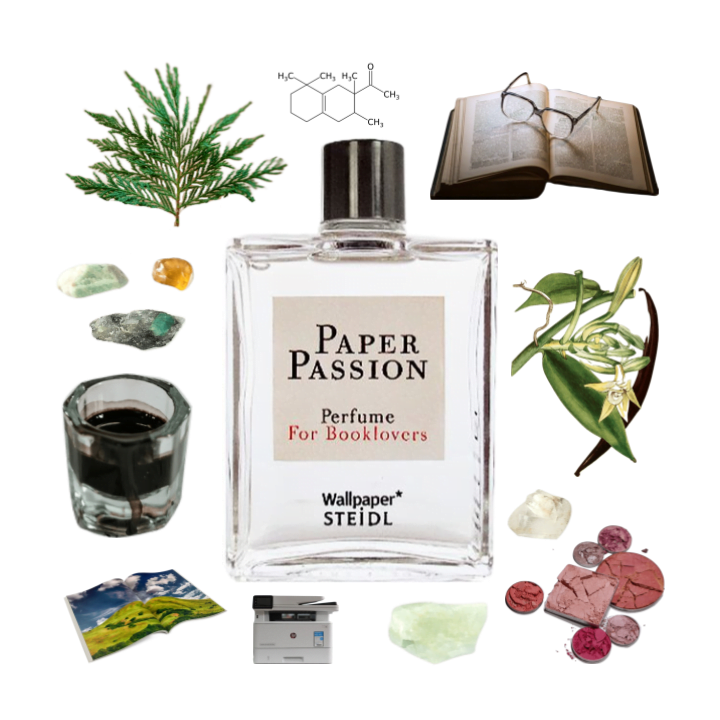
Released in 2012 to viral bookworm fanfare, Wallpaper * Steidl’s Paper Passion was actually the first fragrance sample I ever owned. I first heard of the book-scented perfume somewhere on the Internet and was instantly enamored. I’d coveted quirky perfumes I’d seen online before (like some questionable Demeter selections), but this was different. It wasn’t just the smell of lemon meringue pie or a chocolate orange or a moonbeam. (Still don’t quite understand what that one’s supposed to smell like.)
It was the smell of books.
I was in my teens and a hopeless loser of a bookworm. I was the president of the Library Aides’ Club at school. At a time when I adored scents but struggled with identity and finding things that suited me, this felt right. I loved books more than anything. To smell like them would be perfect. It wouldn’t just be enjoyable, it would be something integral to me. Something authentic.
At some point in all my nerdy babbling, I mentioned the perfume to my mother. She must have asked for a link, because I emailed her one (along with a link to the Demeter scent I was particularly coveting at the time, which I still haven’t tried):

And, lo and behold, on my birthday, my very first perfume sample was bestowed upon me.
It was a tiny 1ml sample vial of Paper Passion.
I looked up at my parents with wide teenaged eyes, saying, “But that must have cost… like… twenty dollars!”
They nodded gravely. This stuff was atrociously expensive. The idea of spending that much money on a single milliliter of anything blew my mind. It still kind of does. What was this Paper Passion? Was it liquid gold I held in my hands before me?
So I carefully unstoppered the vial and took a deep whiff. And did my best to look excited about it.
Reader, it did not smell at all like I’d imagined.
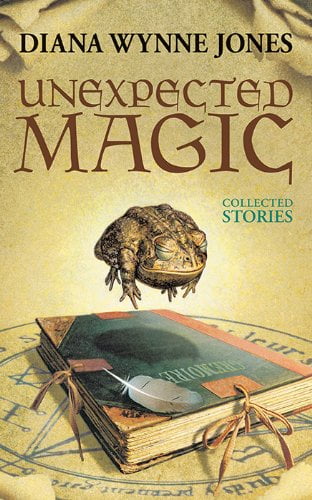
I’d pictured a library of old books, with yellowing and curling pages, that lovely dusty woody-vanilla scent in a homey library. I’d pictured my home away from home, the dusty local library, as well as the school library and the rival library I refused to go to because all the popular kids went there. I’d pictured the best-smelling book in my collection, an excellent book of Diana Wynne Jones stories called Unexpected Magic. I waited with bated breath for that magic to hit me with a wave of rotting vanilla pages and comfort and dust.
What hit my nose was a puff of alcohol, plastic, and glossy photo paper ink.
I don’t know that I even ever wore Paper Passion on skin. I was crushed but I couldn’t show it. How embarrassing, to covet something so expensive that turns out to be a terrible choice.
I proceeded to carefully hold on to Paper Passion, storing it with all the gaudy costume jewelry I never wore, occasionally giving the vial a discerning whiff, never wanting to admit defeat by showing I didn’t like it.
In my mind, I recorded Paper Passion as an immeasurable disappointment. It put me off perfume for a while. I stuck to my own essential oil recipes and sulked. Real perfume, I reasoned, was strange and smelled bad. There was no point.
What an absolutely horrible first fragrance for a teenager Paper Passion was. My parents really should have gone with the (much cheaper) Demeter Lemon Meringue.

But books weren’t lemon meringue. They weren’t just something that smelled nice. They were me. And in Paper Passion, they smelled horrendous.
That was a decade ago. Now I’ve dug through my sample collection for that one clear little vial that started it all. I’m going to start fresh with this curious beast. I’m an adult with a developed palette, and I’ve since understood that there are other perfumes that actually smell like old books. I’m putting our differences aside and starting anew with this inky little oddity.
Paper Passion opens with a burst of perfumer’s alcohol strong enough to make you cough. When the dust clears, the opening note is one of… wet plastic and mildew? Pointy, pungent, and dark. The impression I get is of some sort of mold and slime growing on a jagged piece of black plastic on the side of the highway.
There’s a profound sense of confusion to it: something that smells like wet rot interpolated with a man-made material that will never decompose. And this isn’t rot in the endearing, vanillic, old-books way, but in the way that makes you want to wash your hands. I’m imagining a cheap plastic birdbath filled with old water that’s gone slimy and has mosquito larvae wriggling around in it.
It smells like maybe something’s gone off. And, to be fair, it’s possible something has, but I also think I remember the opening always being like this. The ad copy for the perfume seems confident that it gets better with age: “Schoen spent days in the depths of the paper-filled Steidl headquarters in Göttingen, sifting through books, papers samples and inks, to find inspiration for a perfume that is true to books, wearable, and which ages well in time just like a good book.” So I’m going to treat that bizarre opening as intentional.
It’s one of the most universally unpleasant perfume openings I’ve ever encountered, exaggerated greatly in heat and humidity.
After half an hour, the black plastic baking in the sun and weird wet mildew thankfully start to clear, and the central accord of Paper Passion begins to surface. This is a relief. The horrid rotten-smelling-black-plastic-sludge phase is over.
What rises out of Paper Passion from this point onwards is the smell of printing. It’s crisp warm white paper and color ink cartridges. It lacks the musty overheated-computer smell of a printer doing it job, but other than that, Paper Passion is the smell of printing things out. It makes me think of glossy tabloid photos, that faint plastic-y paper smell that full-color magazines have.
It reminds me of my days manning a giant large-format poster printer in a marketing office, replacing giant cartridges of multi-colored inks, loading giant rolls of different kinds of paper, all of it sharp enough to cut your fingers. This is the smell of a freshly-printed poster that I’ve cut from the machine and laid out on the floor, kneeling next to it to check for any discoloration or mistakes before rolling it up and tying it with a rubber band.
The accord opens dominated by sharp black ink, a hint of that plastic bitterness lingering behind. It’s more artificial and computer-y than ballpoint pen ink. It isn’t at all inky in a natural woody way like oakmoss or vetiver can be.
In a previous, much more critical review, I wrote:
“This is pure ink. Not like pen ink, not even like a brand new book on the shelf, with the ink buried in the smell of clean paper and plastic covering and cardboard; it’s more like the flimsy plastic technicolor ink of a magazine rack. […] Vetiver and oakmoss are inky in a way that is fresh and green and alive, while this is inky like consumerism and burnished plastic gloss.”
I have less disdain for it now, but the sentiment still stands.
No, this is printer ink, pure and simple. This is warm freshly-printed pages, matte photographs cut out for a school project, coffee table books filled with glossy plasticky pictures of sailboats off the coast of Greenland. It’s a little like tabloid magazines made out of that incredibly shiny plastic-coated paper that bends instead of folding crisply as you ponder whether or not it is recyclable. It’s plastic and ozone and warm paper all in one.
This is ink fresh off the press, still warm, colorful and utterly artificial. At times, something about it feels almost fruity, the artificial warmth wrapping itself around an incidental hint of sweetness in a way that reminds you in some sort of pink or red fruit flavor, but you can’t remember exactly which one.
This must be the faint trace of osmanthus hidden in the fragrance, that gorgeous flower that smells almost exactly like apricots. It only appears briefly, flashing through the layers of the perfume in subtle hints at the very end of each breath. It doesn’t ever come across clearly on me, instead imbuing a very faint hint of warm fruity sweetness to the edge of the ink.
Paper Passion is a great office fragrance. This is not to say that it’s a safe choice to wear around colleagues today in an awkward open-concept space with an aura of forced joviality. Oh no, quite the opposite: this feels super niche and not crowd-pleasing at all. It’s a great office fragrance in that you will smell just like office supplies. You could wear Paper Passion like camouflage and hide in the copy room all day, and no one would notice a thing.
As time goes on, the ink mellows out, with the slightly softer almost-dusty scent of crisp white paper wafting out behind it. Indeed, now there is a very faint undercurrent of something woody and almost vanillic in the base notes. It’s a hundredth of the strength of the woody vanilla smell of an old book with curling yellow pages, but it’s there, a seed hinting at the far-away future of this freshly-printed novel.
By one to two hours in, the ink has faded away, and the paper smell is gradually softening. There’s still an overall printer-ink cast on the concoction, but it no longer feels entirely man-made; I’m starting to sense those vague woody notes in the background. There’s no particular kind of wood represented here, just paper, freshly cut and bleached whiter than snow. This isn’t the smell of wood, but of wood that’s been beaten to a pulp, pressed into thin sheets, and blanched. Still, there’s something in it that’s at least a little recognizeable as woody.
This is the first moment of Paper Passion that doesn’t feel entirely artificial. The plastic and ink and bleach all make me think there’s nothing in nature that smells like Paper Passion, but gradually, gradually the paper note starts to decompose, getting just a bit more recognizeable as a soft woody scent with a vanillic undertone. The effect is faint and never ages to the curling-yellow-pages stage, but you’re smelling the fresh book aging. The effect is rather breathtaking. The overtone of fresh ink never evaporates entirely, but the body of the perfume softens with time, leaning more and more towards the cozy library effect I’d craved all along.

The paper accord gets softer and softer, mellower and yellower with each passing minute, and yet a hint of the opening ink remains all the way through. The delicious dust-and-vanillin undertones gradually become more pronounced as the entire fragrance takes on a softer, silkier muskier texture. Paper Passion never convincingly goes into old book territory; the fresh printer ink hangs over it too prominently. I would believe, however, that a couple of hours in, Paper Passion is a new book printed on musty ancient paper.
This, to me, is the most perfect moment of Paper Passion. Two to three hours into its life cycle, the many elements of the perfume hang in a precarious balance of old and new, loved and fresh, cozy and sharp.
And then an odd thing happens: Paper Passion surpasses the dank and mustiness levels typically appropriate for beloved old book smells. The influence of the vanillin fades into the background as the composition shifts into a new phase.
Past about three hours in, Paper Passion surpasses the level of mustiness I’d expect for an old book. Something about it feels more and more incorrect as time goes on, likely due to the bizarre contrast between the fresh black ink and aging damp paper.
There’s something else growing here that makes Paper Passion feel strange. At this point, Paper Passion takes a turn into odd sweet and powdery territory. The vanillin is no longer balanced with the musty paper in a way that suggests books. Instead, from three to four hours in onwards, this is an increasingly sweet, fusty, and curiously powdery scent. It’s dusty, sure, but it’s more than that: this is a powdery texture like that of old-fashioned aging makeup in a cardboard box.
Although nothing here is remotely floral, the texture of the powder is not unlike that of powdery flower notes often written off as “old lady” smells. Oddly enough, this phase of Paper Passion feels as if it would be at home in a bathroom cabinet full of aging rose-scented talcum products. This makes me think of a mature woman who’s a powerhouse in the newsprint or publishing industry, dusting her face in the morning with a product that smells just a little bit like fresh ink.
It’s an eclectic mix: an increasingly damp yellow paper mustiness, a splash of fresh newspaper ink, a handful of makeup powder.
It is at this point that I asked my discerning boyfriend whether my arm smelled like a book.
“Maybe,” he answered. “If the book was covered in perfume.”
The powder apotheosizes in a puff of stuffy grandeur about four to five hours in. Beyond this point, Paper Passion fades away in a linear manner, leaving a fine musky trail of a skin scent behind long after the powder, mildew, vanilla, and ink are all gone. There’s a very long tail to it, with something like 24 hours of barely-there musk lingering at the very end once everything else is gone. Paper Passion is done moving through most of it beats by around five to six hours in, but that long tail of faint musk sticks around for as long as another day or two.
Several reviews of Paper Passion note a similarity to Juliette Has A Gun’s Not A Perfume and Escentric Molecules’ Molecule 02, leaving me to assume there’s a heavy dose of ambroxan in this, though it doesn’t jump out at me as the most prominent component. Sure, there’s a general musky woodiness, but nothing particularly salty or ambergris-like to my nose.
More significantly, several reviews also compare it to Escentric Molecules’ Molecule 01, which is based around Iso E Super. This makes sense: Iso E is light, transparent, and neutral. It prolongs the life of other notes and imbues perfumes with a certain musky je ne sais quoi. It can present a dry and woody note similar to cedar or perhaps sun-dried vetiver grass.
To my knowledge, I am rather nose-blind to Iso E Super. If that’s a big component here, it makes sense that the opening is all weird ink on me and not really woody at all. Perhaps that weird plastic-and-mildew effect in the opening is only like that to me because I can’t smell some sort of dry cedar scent completing the picture, like a red-green colorblind person’s misleading partial view of a picture.
This effect could also explain some other reviewers’ bizarre impressions of Paper Passion — corn, canola oil, mineral water, plastic water bottles, mineral water in plastic water bottles — as well as others’ complaints they smelled nothing at all.
Though kind of weird and misleading in its marketing, it seems Paper Passion was far ahead of its time. Subtle and inscrutable Iso-E-Super-heavy perfumes are really having a moment right now. All these hard-to-describe, your-skin-but-better transparent sorts of scents today are doing what Schoen first did way back in 2012.
Still, unlike many of those modern releases, which I can hardly smell because there’s little to them other than Iso E Super (looking at you, Lalique’s Encre Noir), there’s more happening in Paper Passion than just Iso E. It’s a wonderfully subdued, subtle sort of niche scent you really have to meditate in to appreciate. I hated Paper Passion when it was first released. I didn’t like it even just a year ago. But now, after spending some time getting to know the world of fragrance, I’m surprised and delighted to see that I… actually kind of like Paper Passion.
Yes, I’m actually fond of this fresh-ink-and-paper monstrosity. Especially that middle phase where the aging paper and sharp ink feel perfectly balanced in a distinct, cohesive scent. It’s probably mostly the mere exposure effect at this point, combined with the fact I’ve worked in printing and publishing for years, but there’s something nostalgic and comforting about it to me now. I like its subtlety, and I enjoy the deepening layers of woodiness and vanillin in the drydown. I was too short-sighted and inexperienced to look past the inky opening before, and now that I’ve gained more experience it feels like I’ve unlocked a new level of Paper Passion I didn’t know was there.
Though I must begrudgingly admit I like Paper Passion now, it’s taken numerous tries for me to get here. I can see how many people would be turned off by it. It’s weird, it’s inky, it’s industrial in a way that makes me think of a Comme des Garçons composition. Put simply, it’s quite niche. But I also think the marketing and positioning of the scent is partly responsible for the general distaste for this fragrance. Had this been different, the scent might have proven more generally well-received.
Books are a funny thing. People who love them really, really love them. Usually, old and used books most of all. They see “perfume that smells like books” and decide they want it, end of story. Books are great and I need this perfume in my life.
The trouble is that when most of us think of the smell of books, we think of old books. The comforting dust of libraries, the soft vanilla aroma floating through yellowed old pages, the smell of decades-old binding glue and leather. We imagine cozy and warm comforts, musty and well-worn and familiar. We breathe in that magical combination of Acetic Acid, Furfural, Benzaldehyde, Hexanol and Vanillin that makes up old book smell.
But Steidl, the company that commissioned this scent, is not a beloved public library. Libraries don’t have the budget to commission Geza Schoen. Instead, it’s a German photobook publisher and printing company. It has nothing to do with old books, and no interest in promoting the smell of them. Rather, Steidl deals with brand new books, fresh off the printer. In particular, photobooks filled with glossy full-page color photographs.
Just a few minutes of brand research make it clear that the smell of Paper Passion makes sense. It was never supposed to be old book smell. It’s made by a new book company. Of course it smells like new books and printing ink and photographs.
This misunderstanding is a bit of a tragedy for eveyone involved. The Paper Passion release got some viral coverage back in its day, leading hordes of bookworms (like myself) to enthusiastically purchase the scent. “I know what books smell like,” we all thought, eagerly awaiting our expensive bottled-up old book smell.

Steidl, on the other hand, commissioned a perfectly good, innovative industry gimmick piece from the talented Geza Schoen. It brings something new to the industry. As far as industry gimmick perfumes go, this one is unique and came complete with viral buzz and gorgeous packaging. It makes sense that we talk about this more than we talk about, say, the Kentucky Fried Chicken Scented Fire Log. (What the hell was up with that, anyway?)
That mismatch between buyer and seller is what doomed Paper Passion. Instead of billing it as the smell of books, Steidl might have branded this as the smell of magazines or of photo ink, targeting hobby photographers and tabloid readers. Sure, it’s a smaller and much more niche audience, but that’s what this is: a niche fragrance. Trying to sell it to the mainstream world of book lovers was a greedy and miscalculated marketing move. Sure, it generated buzz and sales, but it also generated disappointment. All those bookworms who know nothing about perfume but wanted to smell like (old) books were misled by the hype.
These things do happen. It’s hard to say who’s more at fault: the Steidl marketing department, or the readers who didn’t read reviews before buying. At the rather exorbitant price point, though, Steidl has a responsibility to do the marketing right, and they did not do that. They have the budget for it: the packaging is gorgeous, the ad copy is well-written, the viral buzz was there. A single focus group would have revealed Paper Passion isn’t what most book lovers expect when they hear about a book-scented perfume. This is especially true outside of Steidl’s home country of Germany. International buyers are even less likely to understand the context that Paper Passion is made by a photobook printing company, and thus smells like fresh printer ink.
Steidl billed this as “for booklovers” on the front of the box. Press coverage of the release frequently described it as smelling of old books, uncorrected. And yet, your average book lover probably doesn’t associate the smell of Paper Passion with books. It’s too new, too shiny, too artificial and plasticky. After all, how many of us frequently handle new, freshly printed books? Almost all the books I’ve ever read and loved have been library books and secondhand treasures. That’s the smell most people associate with books: old, worn, well-loved pages. This new book smell, on the other hand, is only really familiar to people who work with freshly printed material regularly, such as marketing and publishing workers, photographers, magazine people, and booksellers.
I’m saying all this as a book-lover who had this exact experience, who was bitterly disappointed by Paper Passion and then eventually learned to enjoy it. I find it comforting now, and even see some of that aging musty vanillin I’d originally wanted in the later hours of the drydown. It’s uniquely balanced: the growing old-book undertone is quite comforting, while the lingering remains of the opening are still inky and sharp.
Paper Passion is a unique scent that made its mark on the industry and predates numerous similar Iso-E-heavy nebulous niche scents. It feels niche and artsy in the way that a gasoline-scented perfume might: lots of people say they like the smell of this thing, but you have to be a certain kind of person with a certain outlook on life and experience to actually enjoy wearing it.
Clocking in at around six hours for the main beats of the fragrance and an additional 24+ hours of faint lingering musk at the least, the longevity of Paper Passion is quite strong. This makes sense: Paper Passion is a Perfume proper, not an Eau de Parfum, meaning it has a fragrance ingredient concentration of at least 20% to 30%. The concentration is the most reasonable justification I can see for the price. Paper Passion is a unique experimentation with underutilized notes, and that high concentration is likely necessary to make these delicate and strange accords stick around.
The projection is also satisfactory: this isn’t inherently a loud style of perfume, but it projects appropriately for an intimate musky-woody-Iso-E-Super sort of scent. These things are all about subtlety, and the volume of Paper Passion is just right, first projecting its glossy ink and then clinging to your skin with its powder and musk.
If you want the vanilla decay smell of old books, this is not for you. Here are some other recommendations:
- If you want another perfume directly based on the book-smell gimmick, give Maison Martin Margiela’s Whispers in the Library a try.
- If the oud-like rotten note hidden deep beneath the vanillin in old books really fascinates you, check out Atelier Cologne’s Vanille Insensée for a dark and dank abandoned shipwreck library.
- If you love the faint unsweetened vanilla smell of books but would love to see that accord colored in with a little something extra, you might love the aromatic-spicy-resinous Eau Duelle Eau de Toilette by Diptyque (my personal favorite old book scent, and one of my all-time favorites generally).
If, however, you happen to love the smell of fresh ink and crisp white office paper, you’ll adore Paper Passion. Considering the price point and extremely niche nature of this one, be sure to read reviews carefully before sampling, and to sample carefully before buying a bottle. Even if you live and breathe fresh printer smell, your experience is likely to vary widely depending on your individual perception of Iso E Super and how Paper Passion plays with your skin chemistry.
I’m really glad I revisited the first fragrance sample I ever owned. Ten years ago, I couldn’t stand it, but now I have a respect and appreciation for Paper Passion I never could have expected. This is quite a niche scent, and you really need to quietly immerse yourself and contemplate it before coming to any conclusions. Paper passion is an impressive display of subtelty and nuance for a linear perfume with a simple pyramid and gimmicky company-commissioned premise. This really is a work of art from Geza Schoen. It’s not going to be pleasurable for many, but that’s okay. There are phases of it I find revolting and odd, but I’m so glad to have experienced the journey in full. The artistry is superb, and I’m glad I’ve come around and am able to see it now. An unexpectedly delectable tabloid ink treat.
Paper Passion is a fascinating art piece. Is it accessible and easy to love? Nope. Is it the perfect perfume for the average bookworm? Nah. Is it worth that egregious price tag? Absolutely not.
The packaging is gorgeous. I’ll give them that much. Well done on that, Steidl.
But it’s true what they say — don’t judge a book by its cover.

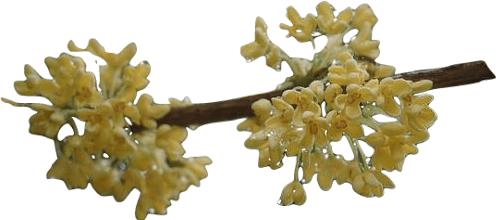


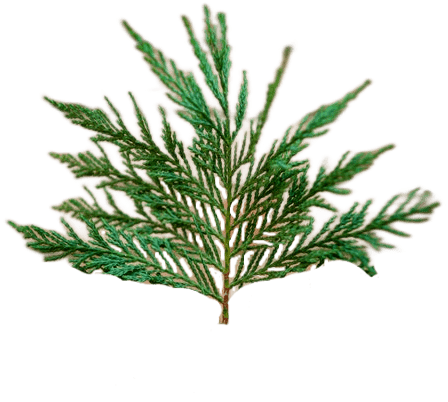
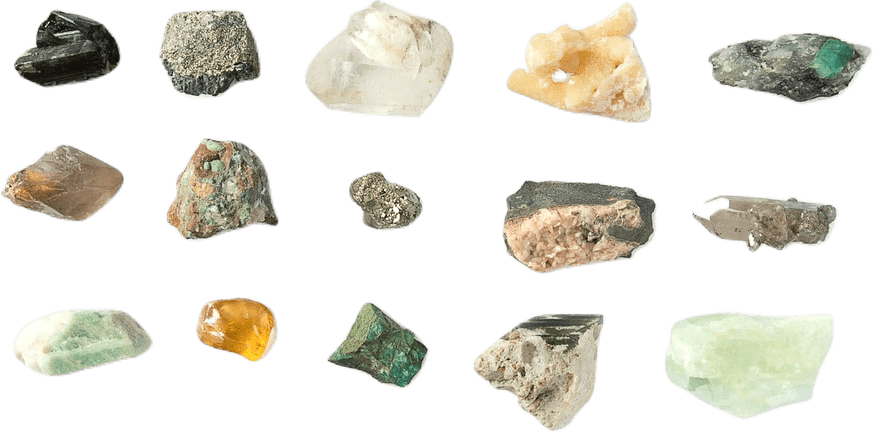

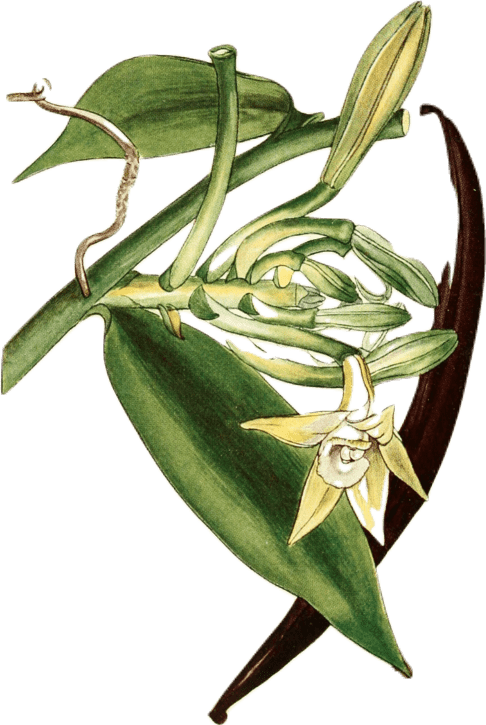



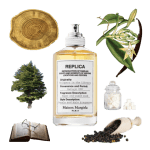
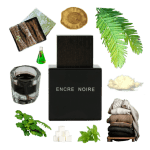

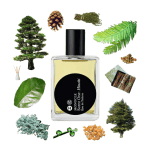
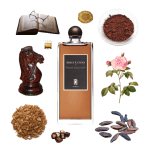
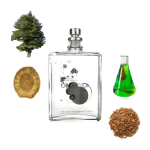
5 thoughts on “Paper Passion Perfume by Wallpaper* Steidl Review”